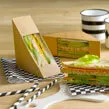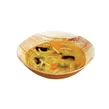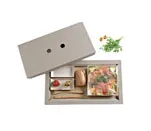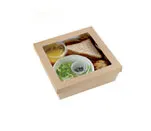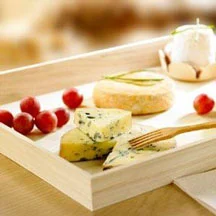Virtual Restaurants are a Threat to Brick and Mortar Restaurants
Posted by Melanie Green on Mar 26th 2021

The growing success of food delivery apps such as Grub Hub, DoorDash, and Uber Eats have already changed the restaurant industry in significant ways. Customers now expect to be able to order all of their favorite foods from their home or office. In many cases, people order takeout through food delivery apps instead of going into restaurants.
This has created a tremendous opportunity for takeout savvy restaurants. However, it has also inspired virtual restaurants that only prepare meals for takeout customers and meal delivery services. This could be a real threat to brick and mortar restaurants who have higher operating costs and limited seating capacity. Here are some things to know about virtual restaurants.
Reduced Operating Expenses

The restaurant industry traditionally has fairly low profit margins compared to other industries. With having to pay staff, navigate growing food costs (and waste), and cover rent and utilities, it can be difficult to make it work. It isn’t surprising, then, that a large number of new restaurants don’t make it past the two year mark. Virtual restaurants don’t need to pay for hostesses, servers, tables, chairs, rental space for dining rooms, plates, glasses, silverware, or some other overhead expenses associated with restaurants. This makes operating a virtual restaurant a less expensive alternative to traditional restaurants.
More Than You Think

Virtual restaurants aren’t uncommon and there are probably more virtual restaurants around than you think. The New York Times reported that there were 4,000 virtual restaurants on Uber Eats in 2019. This is only the number for one meal delivery service, yet there are many other meal services that utilize virtual restaurants.
Cheaper Meals

Due to their low operating costs, many virtual restaurants can offer meals at lower prices than their brick and mortar counterparts. In addition, many customers tip less for delivery than at sit-down restaurants. This can cause many customers to prefer meal delivery over going into brick and mortar restaurants.
Faster Service

Often, virtual restaurants offer customers faster service than brick and mortar restaurants. At a restaurant, customers have to travel to get there, may have to wait to be seated, order, and then wait for food to be prepared. Virtual restaurants can receive an order, prepare it, and it is picked up by a meal delivery service.
No Seating Limits

At a brick and mortar restaurant, there is a finite number of people that can fit in the dining room for a single dinner service. In order to increase the number of orders a traditional restaurant can have in a set period of time, brick and mortar restaurants must expand to a larger dining space or hurry customers to eat quickly so the table can be switched over. Virtual restaurants don’t have the same seating limits.
Whether you operate a brick and mortar restaurant or a virtual restaurant, PacknWood has the eco-friendly single serve restaurant supplies you need. To learn more about our line of green food packaging, email us at contact@packnwood.com to request a catalog.

















